Belgian Griffon: description of dogs and their content
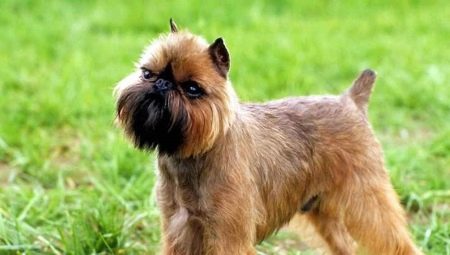
Pets have been human companions for many years. Lovely and affectionate animals save people from loneliness and help to escape from stressful situations and life difficulties, the accumulation of which can provoke long-term depression and the development of dangerous diseases. The most popular and demanded pets are dogs.
You can choose and purchase a pet in specialized nurseries or from professional breeders who will not only sell the animal, but also help with the choice of the breed. Among city dwellers, small decorative dogs are in high demand and popularity, which require a minimum amount of care, but bring no less joy than large breeds.
Cynologists recommend paying attention to the amusing and cheerful animal - the Belgian Griffon.
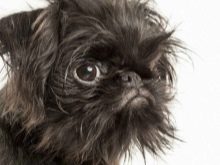
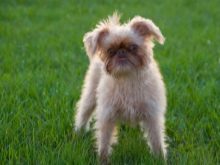
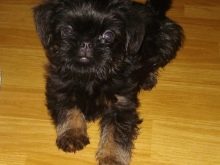
Origin story
The Belgian Griffon is an ornamental breed that was bred back in the 15th century. This breed arose as a result of crossing a stray bearded dog with the following species:
- small Brussels;
- pug;
- Yorkshire Terrier;
- pinscher;
- pygmy schnauzer.
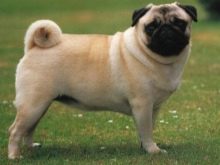
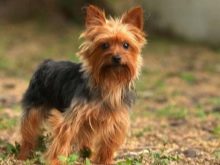
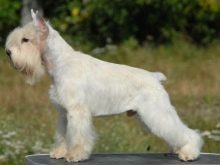
In the 19th and 20th centuries, the animal was used as an invariable attribute, emphasizing the status of the owner. Each noble family had this pet in their home. Only a few decades later, ordinary people in Belgium could afford to buy a dog. Despite its light weight and similarities to a toy, the pet helped peasants to fight mice and rats thanks to its keen hearing, good sense of smell and lightning-fast reaction.
This breed received official recognition only in the 18th century and was registered in the register of dog breeders, and breeders began to actively improve it. Correction of species characteristics continued until 2000.


Description
The Belgian Griffon is a funny little animal that has a bald head and shaggy beard. The maximum height of mini dogs is 35 cm, and the weight is 6 kg. Individuals of the female and male sexes do not have pronounced external differences. The body of the animals is square, strong bony skeleton and a deep rib cage with solid ribs, as well as a toned belly. The skull has a round shape and a rounded forehead. The flat muzzle has a wide jaw with small teeth and a protruding lower jaw. The tightly closed mouth is framed by black lips.
A distinctive feature of this breed is the location of the forehead, chin and nose at the same level. The nasal passages, located at the level of the eyeballs, are always painted only black. Wide-set brown eyes have a large, round shape. An open area of the eye protein is considered a deviation from the norm. The auricles have a wide shape and a high fit, and if they remain intact, they hang down neatly. Some breeders prefer stop this part of the body.
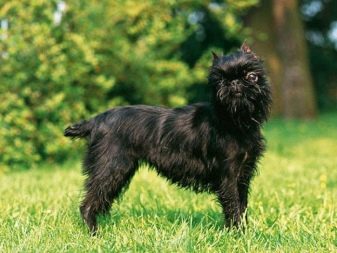
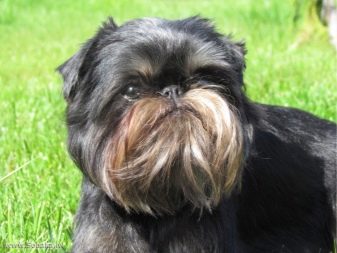
The established standards provide for a mandatory reduction in the length of the tail, which is located at the level of the loin and directed upwards, and its long hair must be cut to a minimum size. Wide-set feet have strong bones and a developed muscular system that allows the animals to move quickly and jump high. The coat is long and uneven, with a coarse and wavy structure and a thick undercoat. The breed is not characterized by the presence of gloss and curliness. The color of the coat can be of the following shades:
- black;
- pale yellow;
- red & black.
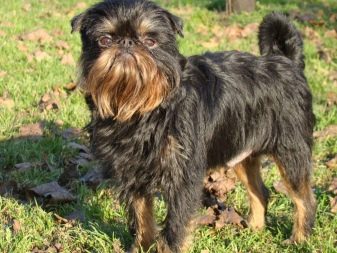
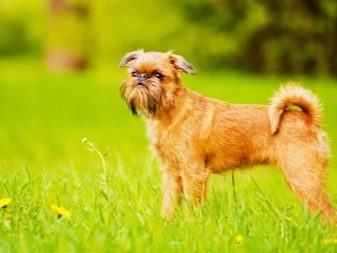
Puberty in dogs begins at the age of one year. To prevent complications during gestation and delivery, the cable should be smaller than the bitch. The mating process should take place under the supervision of the owners, who, if necessary, should help their pets. Dogs with the following characteristics are not used for breeding:
- aggressiveness;
- irregular body shape;
- calm disposition.
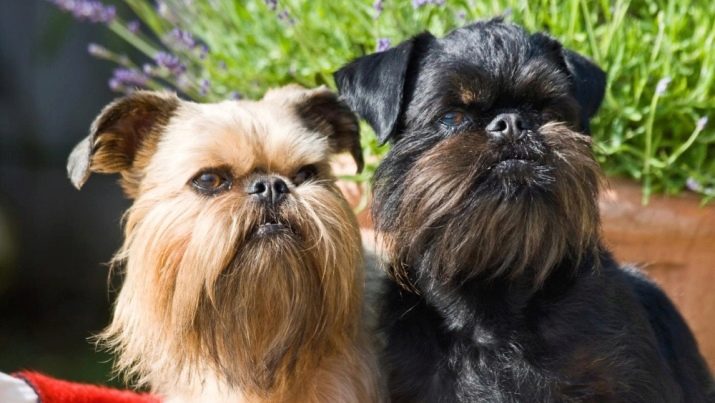
Like any pet, griffons have a number of advantages and disadvantages. The advantages of the breed are as follows:
- exotic appearance;
- unpretentiousness;
- cleanliness;
- equilibrium;
- discipline;
- stable mental state;
- absence of genetic diseases;
- high intellectual abilities;
- lack of laziness;
- fast learner;
- precise execution of commands;
- rarity;
- good-natured and sociable character;
- conflict-free;
- devotion;
- sincerity;
- intelligence;
- good hearing and smell;
- protecting the house from mice and rats;
- good compatibility with other pets;
- love of games and communication with children;
- a subtle sense of the emotional state of the owner.
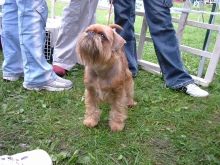
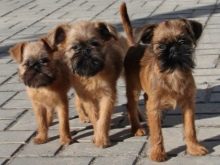

It is worth highlighting the following disadvantages:
- submission only to the head of the family;
- stubbornness and willfulness;
- intolerance to loneliness;
- the need for regular communication and walks;
- long selection of partners for mating;
- impossibility of training to the tray.

Character traits
The original name of this breed (black wire-haired terrier) was given due to the high activity, cheerful and wayward nature of the animals. A small and amusing animal is constantly in motion, growls, barks, plays and dugs all the time.
Beginning dog breeders and young children, this behavior touches and amazes. Despite the mobile and stubborn disposition, the griffon practically does not show aggression and has a positive attitude not only to family members, but also to pets.At the sight of strangers who are heading to the owner, the pet will certainly rush to protect him and try to scare the stranger.
Taking into account the individual characteristics of the character from the first days of the dog's stay in the house, it is necessary to begin the process of training and education. A restless animal must definitely know its name, place of rest and food, and also understand where it can go to the toilet. During the game, the pet will quickly master commands such as "Place", "next to", "sit", "voice" and "not allowed."
A smart pet can react negatively to rudeness, insults and shouting, but in response to praise and treats, he will try even more to guess the owner.
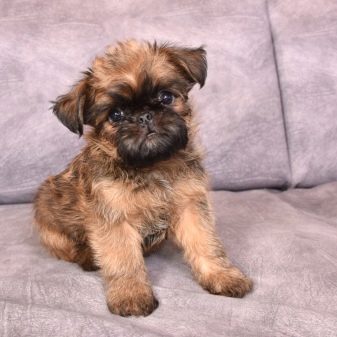
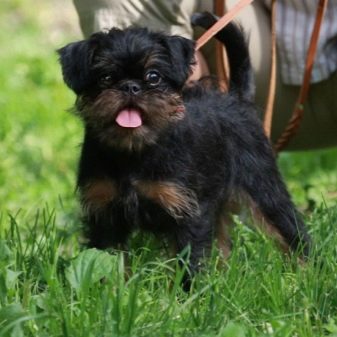
Life span
The high level of immunity and the absence of genetic diseases have a positive effect on the life expectancy of pets. This breed is the leader in life expectancy among decorative dogs. The average age of animals is about 15 years, but in the most comfortable living conditions, it can delight its owners for 20 years. Despite the high resistance of the breed to diseases, animals often suffer from the following pathologies:
- conjunctivitis;
- cataract;
- retinal detachment;
- violation of the functioning of the eye muscles;
- diseases of the musculoskeletal system;
- worms;
- skin parasites;
- complications during gestation and childbirth.

Proper care and a balanced diet will help to avoid these problems. Timely vaccinations against the following diseases will be able to significantly prolong the life of a griffon and prevent the occurrence of dangerous diseases:
- enteritis;
- leptospirosis;
- plague;
- parainfluenza;
- upper respiratory tract disease;
- periodontal disease;
- inflammatory processes in the oral cavity;
- hydrocephalus;
- rabies.
Important! These procedures should only be carried out in specialized veterinary institutions by experienced professionals. All medical manipulations should be reflected in the immunization card.
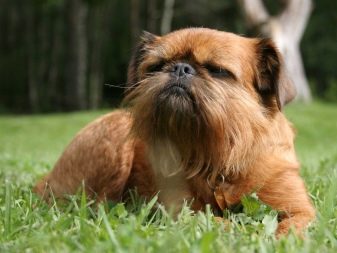

How to choose a puppy?
To raise a healthy and beautiful animal, it is not enough to care for and feed it well, first of all, you need to choose the right puppy. You should contact professional breeders for purchasing and in no case purchase pets in spontaneous and unauthorized markets. The selected animal it is necessary to check the passport and immunization card, and also carefully examine its habitat. If the pet has been kept in unsanitary conditions and has not eaten properly, such a purchase must be discarded.
Cynologists recommend taking a closer look at the puppy you like, which should be active, mobile, inquisitive and not have obvious signs of illness, as well as eat the food offered to him with appetite. Only if all of the above conditions are met, you can safely take your pet into the house.
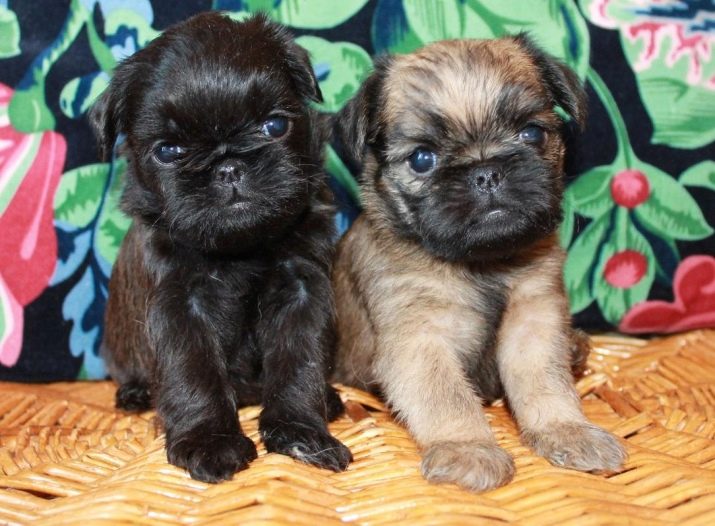
Conditions for keeping
This breed, despite its exotic appearance, is distinguished by its unpretentiousness. The pet can live both in a private house and in a small city apartment, and it also does not need long walks and intense physical activity. Before buying a pet, he needs to equip a recreation and eating area, as well as purchase items for entertainment. The comfortable temperature for the dog is +20 degrees.
The place to rest and sleep should be equipped with a soft and warm basket that will warm the animal and protect it from drafts. In specialized stores, you can buy ready-made houses for small dogs or make this design yourself. The animals love to lie on artificial fur or fleecy fabric. In a pet's den you need to clean regularly, due to his constant desire to hide in his bed various small objects that were accidentally lost by the owners.
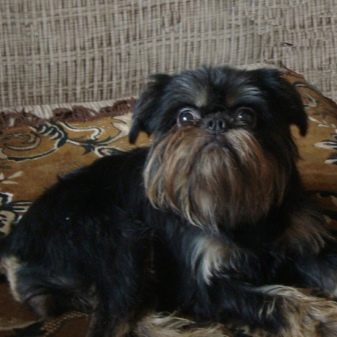

An active and agile animal needs daily walks in the fresh air. During the walks, the pet should play enough and run over as much as possible, so as not to cause trouble for the owners of the house. Nature and fresh air also have a positive effect on the dog's health and coat quality. In winter and during the autumn and spring cold weather, the pet needs to wear special outerwear before walking, which will help prevent hypothermia of the animal and the development of colds.
The little animal responds positively to various types of travel, shopping trips and sports activities of the owners, in which he will be directly involved... To visit the street, the animal needs to purchase a walking tape. Due to the small size of the animal, dog handlers do not recommend the use of collars and leashes, which can lead to asphyxiation. Only trained dogs who know the main types of commands can be taught to walk independently without a leash.
For long-distance travel, experts recommend using special carriers for animals and baskets.
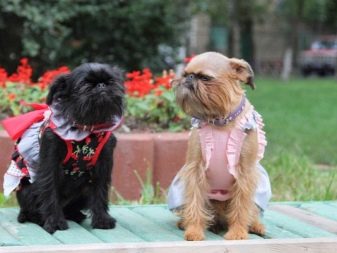

What to feed?
In order for the griffon to be able to fully grow and develop, it must be provided with a balanced diet, which must include proteins, fats and carbohydrates. The pet's menu should consist of the following foods:
- lean beef;
- chicken;
- rabbit meat;
- turkey meat;
- eggs;
- cottage cheese;
- kefir;
- porridge (rice, buckwheat, oatmeal);
- vegetables (beets, carrots, pumpkin, zucchini, tomatoes and cucumbers);
- fruits;
- a fish.

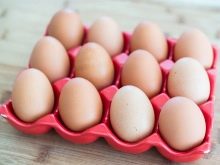
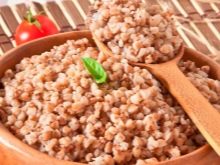
In the absence of the opportunity to use natural products, experts allow feeding with ready-made feeds, which must be of high quality and do not contain dyes, preservatives and stabilizers. Dog handlers do not recommend using dry food and natural food at the same time.
Failure to follow the rules of feeding can provoke eating disorders. The list of prohibited foods includes the following:
- food from the hosts' table;
- fatty, fried and smoked;
- salted and pickled;
- sweet confectionery;
- candies;
- mayonnaise and sauces;
- salt and sugar;
- seasonings;
- chicken and fish bones;
- sausage and sausages;
- whole milk;
- beans and peas;
- potatoes;
- onion;
- soup;
- chips and crackers;
- bread;
- pasta.
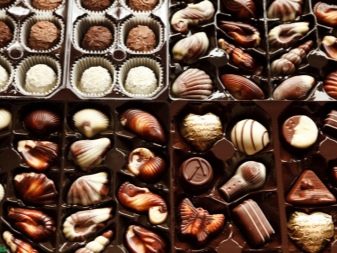
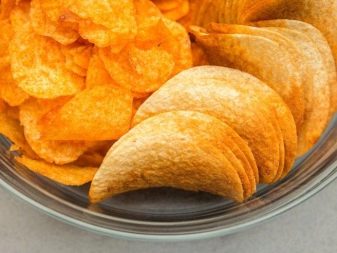
Experts do not recommend overfeeding pets, and the daily ration should not exceed 20 percent of the total weight of the pet. Adult animals should receive food 2 times a day. The animal must have constant access to clean and fresh water. On the street, the pet must be drunk from special bottles and in no case should it be allowed to drink from puddles.
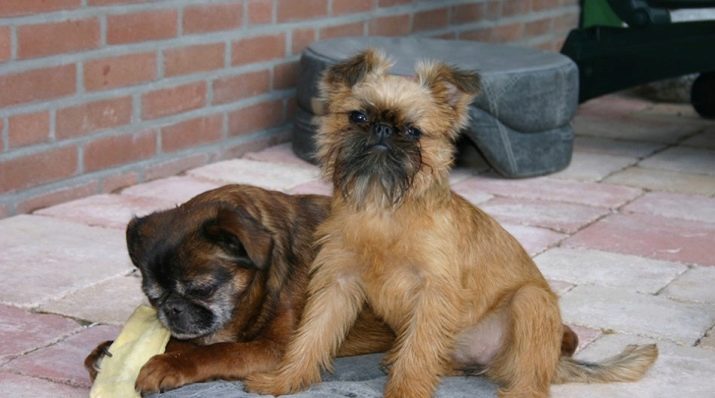
How to care?
Keeping a comical and tiny pet will not cause difficulties even for novice dog breeders. The main activity in caring for an animal is combing out thick and coarse hair. Brushing your pet should be a daily activity, the amount of which should be increased during the period of change of coat. Use hard combs to remove old hair, and soft combs are suitable for cleaning the animal of debris and dirt.
The Belgian Griffon does not need a haircut, but experts recommend tidying up the hair a little in the muzzle and near the eyes.

You need to bathe your pet with special shampoos no more than three times a year. A clean animal practically does not emit an unpleasant odor and can do with less water procedures. It is necessary to correct the length of the nail plates every month with special nippers. The nasal passages, ears, and eyes should be inspected weekly and, if necessary, cleaned.
The beard area needs increased attention and special care, which after each meal must be cleaned of food and rinsed thoroughly. Paw washing should be done after every street visit.
Important! Failure to comply with the rules of hygiene can provoke the appearance of purulent and mucous discharge from the eyes and nasal passages, inflammation of the gums, and itching in the ears. To solve these problems, you must definitely contact veterinarians and not use traditional methods of treatment.


For the characteristics of this dog breed, see the following video.






































